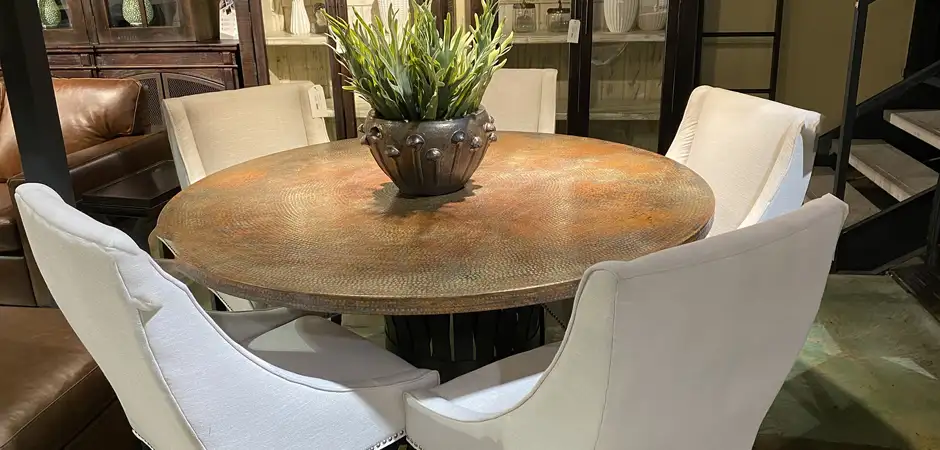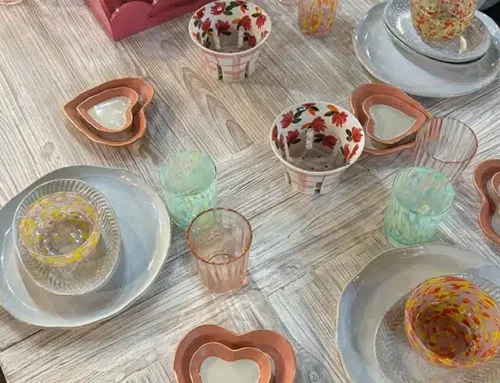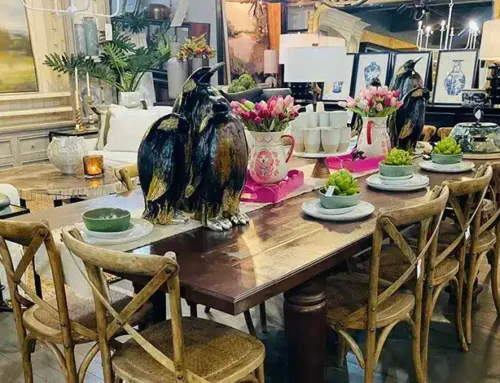
Dining in Style: Selecting the Ideal Dining Room Furniture
Dining areas aren’t just communal spaces to eat meals – they’re places to catch up with your friends and family, serve culinary creations, and unwind after a day of work. By selecting the ideal dining room furniture, you can make your dining room both stylish and functional. Discover how you can transform everyday mealtimes and meetings into memorable and enjoyable experiences when you create the perfect dining setup.
Assess Your Space and Layout
To help you confidently select a style of table, chairs, or barstools for your dining area, you’ll need accurate measurements of the room. Determining the size and shape of your space will help you decide between styles of tables, and how many seats you’ll be able to provide. If you’re measuring a kitchen island or bar for stools, be sure to measure the space below to ensure the seats can be tucked away neatly.
The layout of a room also factors into table and chair size and placement. Consider the natural flow of traffic through a room, as well as other furniture like sideboards, buffet tables, or china cabinets. Allow plenty of room for chairs to move in and out from the table comfortably without compromising the functionality of the room or accent pieces.
Choosing the Perfect Dining Table
Dining room tables come in a variety of shapes, sizes, and heights. Round, oval, square, and rectangular tables are popular options, but custom shapes can be crafted for a unique look. To choose your ideal dining room furniture, you’ll need to decide on the desired height, how many seats will routinely be in use, if you’ll need an extendable option, and the material that will best suit your needs.
Ideal Dining Room Table Height
Dining room tables come in standard height (28-30 inches), counter height (34-36 inches), and bar height (40-42 inches). Taller tables give a more casual feel to a room, while standard height is more formal and traditional. Consider family members, household pets, and overhead lighting when deciding on your dining room table’s height.
Seating Capacity
The number of household members will determine the minimum seating requirements for a dining room table. And, if you routinely have guests over, you’ll want to include them in your seating arrangements. Also, consider young children who will be graduating from a highchair to a booster seat – eventually occupying their own dining chair.
Expandable Options
For the most flexibility, consider a dining room table that has a leaf – a removable extension of the tabletop. Leaf tables can be extended by placing additional sections along the table, which are then locked in place. Some tables have a drop-down or folding leaf that stays attached to the table for storage, while others can be completely removed and stored elsewhere. Some tables have more than one leaf, offering multiple expansion options.
Style and Material
Once you’ve determined the size and shape of your ideal dining room table and how many seats you’ll need, it’s time to consider the style and material. Dining room tables come in a variety of materials, and some may be crafted from a combination of several for both functionality and visual appeal. Wood and metal are typical for dining room tables, and some are available with glass tops – either as a clear surface or as a protective top to go over the existing tabletop. Some tabletops have designs inlaid and then finished with an epoxy coating to give them a three-dimensional appearance.
Choosing the Perfect Dining Chairs
Dining chairs don’t have to match your dining table, but they should complement the overall look. A popular option is to mix and match dining room chairs in two or three different designs or materials, or by placing a dining bench or two along the sides of the table with dining chairs at each end. Make sure the chairs or benches you select are the appropriate height for your table, and that they can all fit under the table when pushed in.
Dining room chairs can be upholstered or un-upholstered, armed or armless, made of metal, wood, or plastic, and can be found in any combination of these. Custom designs can be applied to chair legs, backs, and arms, and tie-on cushions can be added to un-upholstered chairs. Whichever style you choose, dining room seating should be comfortable and tie in with your dining room table.
Accent and Storage Pieces
If your space allows, adding accent or decorative storage pieces to your dining room can add both depth and balance. Buffets and sideboards can store linens and flatware, and china cabinets can display or keep dishes organized. Rolling carts are also popular options for serving wine or desserts after a meal.
Add appropriate lighting above your dining table with a light fixture that fits with the theme of the room. Pendant lights, chandeliers, or custom light fixtures are perfect complementary pieces to a dining room.
Personalization makes up the final touches of the ideal dining room. Use artwork, rugs, accent pieces, or family photographs to tie the entire space together.
Dining Room Furniture for the Family
While a dining room should be stylish, its functionality as a space that will be used daily can’t be minimized. Memories are made at the dining room table – whether they are weeknight dinners, special occasions, game nights, or holiday gatherings. Choosing durable, long-lasting dining room tables, chairs, and accent pieces creates the atmosphere for these memories and years to come. Come see our wide selection of dining room essentials at Furniture Source International, and talk with our skilled experts about finding the perfect pieces for your family.





